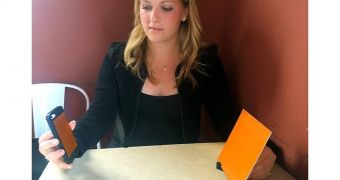Wireless charging technologies may sound all amazing and wondrous, but they really aren't all that astounding compared to cable-based methods, since they rely on close proximity. Very close proximity. It's enough to make any “long-range” solution stand out like the full moon during a night with clear skies.
That is precisely what happened with the uBeam, the new technology based on ultrasound technology instead of Wi-Fi or other electromagnetic waves.
You see, normally to recharge an item wirelessly you have to place it on a special charge pad or mat. It needs a proximity of a millimeter or two to work, at most.
Kind of puts a damper on the whole “cable-less” thing. Admittedly, it does allow small devices like smartwatches to be built without bulky USB charging ports. The Motorola Moto 360 comes to mind.
However, other than that, it's no more permissive than if you had to use a cable. Indeed, at least with a cable you can pick up the charging phone and take or place a call without interrupting the recharge cycle.
With uBeam, you won't have this problem anymore, because the ultrasound-based technology works across entire rooms. The range may even extend to the full 10 meters that Bluetooth communication technologies do.
It's not totally clear how far uBeam will be able to stretch once it has been fully developed, but even having freedom of movement stretching across a whole room will be a fine step forward.
And since the technology uses ultrasound instead of radio waves, there should be no reason for people to worry that the “microwaves” will “cook their brains” as it were.
It works like this: electricity is converted into sounds by a thin charging station. The sounds are transmitted at a level unheard by human ears (though we don't know about cats, dogs, or the hearing of other animals).
Meanwhile, a receiver attached to a phone or other device will capture the sounds, the air vibrations, and convert them back into energy. The main limitation here is that ultrasound can't pass through walls, like Wi-Fi, but it's not like wireless charging tech of today can do that either, when their measly range is of one millimeter.
uBeam founder Meredith Perry (well, one of the founders) believes the technology is promising enough for device makers to modify their designs just to accommodate it. Smaller batteries could be used, for example, if you can expect a system of uBeam points to be spread throughout entire building floors.

 14 DAY TRIAL //
14 DAY TRIAL //